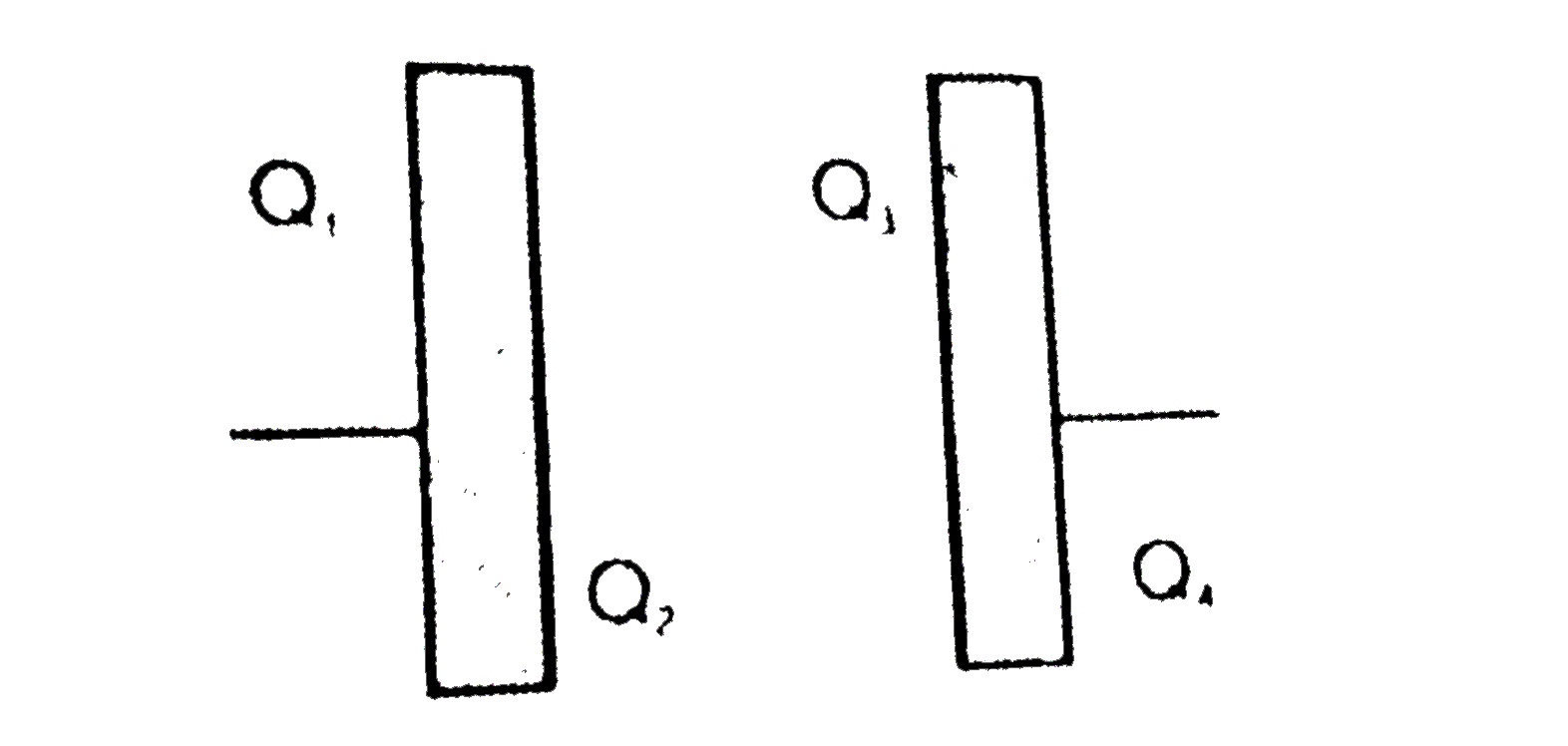A charge of 1μC is given to one plate of a parallel - plate capacitor of capacitance 0.1μF and a charge of 2μC is given to the other plate . Find the potential difference developed between the plate .
To solve the problem step-by-step, we will follow these steps:
Step 1: Understand the given values
We are given:
- Charge on one plate, Q1=1μC
- Charge on the other plate, Q2=2μC
- Capacitance of the capacitor, C=0.1μF
Step 2: Determine the effective charge on the plates
In a parallel-plate capacitor, the effective charge on the positive plate can be calculated as:
Qeffective=Q2−Q1
Substituting the values:
Qeffective=2μC−1μC=1μC
Step 3: Calculate the potential difference
The potential difference V across the plates of a capacitor is given by the formula:
V=QC
Where Q is the effective charge on the positive plate and C is the capacitance. We can substitute the values:
V=1μC0.1μF
Step 4: Simplify the equation
We can convert the micro units to standard units:
1μC=1×10−6C
0.1μF=0.1×10−6F
Now substituting these values into the equation:
V=1×10−6C0.1×10−6F
Step 5: Calculate the potential difference
V=10.1=10V
Final Answer
The potential difference developed between the plates is 10V.
---
We are given:
- Charge on one plate, Q1=1μC
- Charge on the other plate, Q2=2μC
- Capacitance of the capacitor, C=0.1μF
In a parallel-plate capacitor, the effective charge on the positive plate can be calculated as:
Qeffective=Q2−Q1
Substituting the values:
Qeffective=2μC−1μC=1μC
The potential difference V across the plates of a capacitor is given by the formula:
V=QC
Where Q is the effective charge on the positive plate and C is the capacitance. We can substitute the values:
V=1μC0.1μF
We can convert the micro units to standard units:
1μC=1×10−6C
0.1μF=0.1×10−6F
Now substituting these values into the equation:
V=1×10−6C0.1×10−6F
V=10.1=10V
The potential difference developed between the plates is 10V.
Topper's Solved these Questions
- CAPACITORSBOOK - HC VERMA ENGLISHCHAPTER - CAPACITORSEXERCISE - short answer
7 Videos
- CAPACITORSBOOK - HC VERMA ENGLISHCHAPTER - CAPACITORSEXERCISE - OBJECTIVE 2
6 Videos
- BOHR'S MODEL AND PHYSICS OF THE ATOMBOOK - HC VERMA ENGLISHCHAPTER - BOHR'S MODEL AND PHYSICS OF THE ATOMEXERCISE - Short Answer
10 Videos
- DISPERSION AND SPECTRABOOK - HC VERMA ENGLISHCHAPTER - DISPERSION AND SPECTRAEXERCISE - Question for short Answer
6 Videos
Similar Questions
A parallel plate capacitor of capacitance 1μF has a charge of +2μC on one of the plates and a charge of +4μC on the other. The potential difference developed across the capacitor is
View SolutionThe force between the plates of a parallel plate capacitor of capacitance C and distance of separation of the plates d with a potential difference V between the plates, is.
View SolutionOne plate of a capacitor of capacitance 2μF has total charge +10μC and its other plate has total charge +40μC. The potential difference between the plates is (in Volt).
View SolutionA charge of 20 microCoulomb is placed on the positive plate of on isolated parallel - plate capacitor of capacitance 10microFarad calculate the potential difference developed between the plates .
View SolutionTwo parallel conducting plates of a capacitor of capacitance C containing charges Q and -2Q at a distance d apart. Find out potential difference between the plates of capacitors.
View SolutionIn an isolated parallel plate capacitor of capacitance C the four surfaces have charges Q1,Q2,Q3 and Q4 as shown in the figure. The potential difference between the plates is :

View SolutionThe voltage between the plates of a parallel plate capacitor of capacitance 1.0μFis changing at rate of 1.0V/s. Find displacement current
View SolutionIn a parallel plate capacitor of capacitor 1μF two plates are given charges 2μC and 4μC the potential difference between the plates of the capacitor is
_2019_CBT2_E01_002_Q01.png)
View SolutionThe capacitance between the adjacent plates shown in figure (31-E20 ) is 50nF . A charge of 1.0μCis placed on the middle plate (a )What will be the charge on the outer surface pf the upper plate ? (b ) Find the potential difference developed between the upper and the middle plates .

View SolutionThe voltage between the plates of a parallel plate capacitor of capacitance 1μF is changing at the rate of 5 V/s. What is the displacement current in the capacitor?
View Solution
